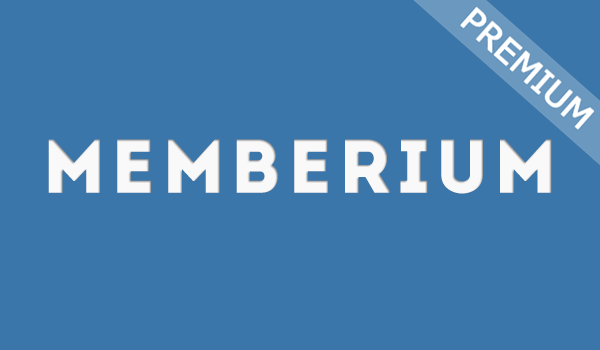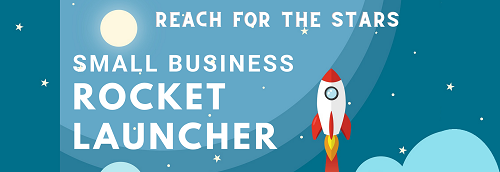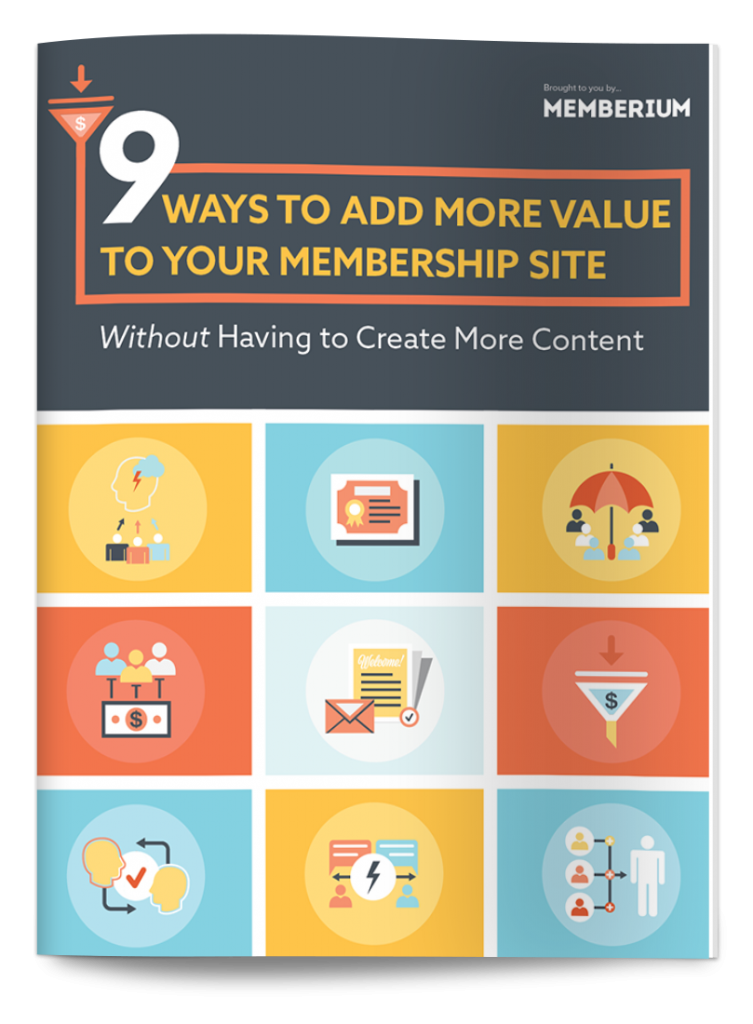

To see a live demo site that’s built with Memberium and find out more about how it works you can check it out by visiting: https://memberium.com/demo
Micah Mitchell – Memberium.com
Micah Mitchell has worked with hundreds of small companies since 2006 in helping them grow their businesses.
After years of consulting and running successful membership programs himself, Micah co-founded the WordPress membership plugin Memberium in 2014.
Since then Memberium has become one of the leading WordPress plugins for building membership sites with Infusionsoft and ActiveCampaign.
He is very passionate about helping individuals transform their lives by generating recurring revenue so they can spend more time on what really matters. He enjoys learning, teaching and spending time with his family in Utah.
“9 Ways You Can Add More Value to Your Membership Site; Without Having to Create More Content…” Download the Book NOW!
SUBSCRIBE
Apple | Google | Spotify | Stitcher
RESOURCE
Discovery Session – Request a FREE demo with Micah Mitchell team at Memberium!
3 WICKED TIPS:
1) Focus on retentions
2) The biggest factor affecting trend and retention is onboarding
3) Map that whole thing out
SPONSORS:
Memberium: Easily Build The Membership Site You’ve Always Wanted
SHOW NOTES:
Today’s Audio MASTERCLASS:
Grow a Profitable Membership Site or Course in 4 Stages
00:01:16 – Micahs Journey
My journey started with Infusionoft and doing general stuff. And then that kind of became specialized into membership sites. And Dave Bullock who codes Memberium and does a ton of stuff. He had actually created it and you know, come up with the name Memberium. And then I licensed it. So it was something that I had done before I had done WordPress membership site stuff for Infusionsoft. So I was really into it and I really wanted a solution like that. And so I kind of asked him, Hey, you know, could we make a business out of this and it was funny because in the beginning, he really was thinking that he would release it. And you know, kind of have it I guess you’d say free or maybe open source I don’t want to miss use the term or whatever. But he was going to try to make money by charging for services mostly in the add ons and through other routes and have the plugin be a way to get people but the way we built the businesses, the plugin itself is on subscription. And that allowed us to build in better support and so on. So it’s for me, I kind of was already interested in this subject, but Dave really had built the product and then I’m more on the marketing side, so I licensed it and that’s how it works. And so then there’s like a model or a vision initially before you licensed Memberium. And then your vision was just maybe a little inline, but a little different than right.
00:11:23 The Four Stages – The high-level overview
Essentially, you see people with a full information Empire where they have this site, this mastermind and all this junk and multiple levels and trying to understand how did they got there.
00:12:00 Stage One – Billable clients
Stage One is the minimum viable product, just sell some information. And the way you know you’re in stage one is if you have between 0 and 10 billings per month for that site. So whether you’re one time fees or memberships, if you’re between 0 and 10, you’re still in infancy, you still are needing to add to the site to and get your basic sales page and so on to get a few members. And that’s the whole thing with stage one, just getting it off the ground. And we really stress they’re doing the minimum amount possible to get above 10 members because most people will overbuild and add stuff that real people can’t take advantage of at that stage yet. So it’s a waste of time and typically it’s procrastination and delay and so on.
00:13:00 – Stage Two – 10 and 100 members
And stage two once you get above 10 members between 10 and 100 members. Stage two is all about selling, it’s saying hey we have a minimum viable product, viable product that can get at least 10 people. Is it marketable and is there a market for it? If we determine that, then we’ll continue to build the product. But let’s try to determine that first. Let’s try to sell it. So let me ask you the are these 10 paying people? Again, 0 to 10 billings. So if you sell a one-time fee course, sell 10 courses a month.
00:14:00 Stage Three – Focus on retention
Three is where now we’re over 100 members. And now we really need to focus on retention. Because typically when we talk about selling, we’re talking about building some automated sales funnel. So if you can get over 100 members, that means you have an automated sales funnel that’s working to a degree. And so you kind of take your attention off of that, and put it on the product, so that the people who are coming in like it more and stay, and also so that then when you do go improve your sales funnel, you can say, hey, new features and new this and that improvement. So stage three is basically from 100 to 500. And these are just rough numbers, but it’s saying hey, you can focus on the product and retention until you get a sizable chunk of members.
00:15:00 Stage Four – Maturity
Stage four is above 500, just anything above that is maturity. And this is where you then want to start focusing on other products. So this is when you’re going to start a mastermind and build a gold, silver, bronze and so forth. The mistake people make is they’ll add that stuff earlier in the process before they have any Members or, you know before their product has been refined and the retention has been fixed. And it just adds more work to their plate to maintain all these products and there are not enough total people to fill the funnels to make it make sense. But when you have, again, depending on the business, let’s say 500 members, and you sell a mastermind, a good one you know, even a few percentage points of that 500 is going to fill a mastermind.
00:19:00 Trying to prove concept
It’s all just principle-based. So, in stage one, the reason I bring that up is even experienced people know, like, you start over at stage one when you make a new site. So in stage one, you’re really just trying to prove concept. And this is where I would focus on doing kind of the, I like to overemphasize this by saying, kind of like the dumbest thing you can think of the crappiest most lazy version of what you think is going to be valuable Valuable for people and what I mean there is, oh, I think people are going to love this concept. They need training on this concept, whatever. Okay, well go whatever do a webinar film for an hour, don’t stress it, don’t try to make the perfect product, just make something and it floated out to them and try to sell it for maybe $97 or $7, or something, you know. And so you’re just trying to get some transactions from people you don’t know to your point. It’s not testers if your mom is a tester, even if she puts in a credit card, but from real customers, you’re trying to go out and say and you can go to your list, sure, but not like your friends and family.
00:23:15 Your salesman outfit
The second stage is like 10 Plus, right? Yeah. So the second one is the most challenging I found actually. Okay, not surprising. This is my theory. My theory is that since most of the people building membership sites are subject matter experts or experts in their field or whatever, it’s not really hard for them to sell because they’re so good. You know, it’s to sell one on one. But they see themselves as value providers, not marketers, not salesmen. And in stage two, it’s like, you just got to put on your salesman outfit. You just got to get out there.
00:31:12 the biggest factor affecting trend and retention is onboarding.
It took me a while to really learn and get this myself. But I was told by a consultant at one point, something along the lines of, I wanted to fix, you know, churn and retention and so on. And they said, Well, you know, that opportunities basically passed for all your current members. And I was like, No, I want to keep as many of my current members as possible. And they were like, well, the biggest factor affecting trend and retention is onboarding. They’re already through onboarding. You can’t fix it. You know, and it’s kind of a rude awakening of like, Oh, you know, yeah, you can do things you can take care of your current customers. Sure. I’m not saying you can’t. But, you know, the first thing we do in stage three typically is all right, let’s make a real onboarding process.
00:34:00 – Start with the trickle
If you’re launch, if you have some issues or if during fulfillment, you have some issues, you know what you try to avoid, but it can be problematic. Whereas this route, you start with the trickle, you kind of fix them with a couple of people. And by the time the traffic turns up, and the sales are coming in, the people are coming in, things are pretty, you know, well-lubricated and running. So it’s, yeah, there are benefits to both one thing I would say, and this is like a higher level of context, when people talk to me about this, it’s like, well, launching, launching is really good if you’ve, if you have a big following, like super popular and it’s like, oh, I’m going to break into the info space sometimes that works rather well. If they have the money to do it and they do a little bit of testing. But otherwise, if you’re just starting the four stages, that’s kind of why we did it is it’s like you know, I love Jeff Walker, like their Memberium client and all that. Nothing against it at all. It’s a beautiful model, but just for people who are very first starting and dabbling. You know, play with maybe this idea of the four stages and really testing out and it sounds like the launch model has but just keep that in mind. And then you can always go back and relaunch.
00:42:17 – You need to indoctrinate people
So, if somebody comes to me and they’re really qualified and they know what they’re doing, and they’re capable of doing this, and they say, How do I prevent cancellations? I would say you need to indoctrinate people. So it comes back to onboarding, when they join, you need to ask them why they joined what their goals are, like, get them to set some goals, get them to track some goals, whatever it is, so that you can use that in the cancellation process. You know you join the membership for all of these reasons. You know, let’s figure out what went wrong along the way.
00:49:00 – Let’s map that whole thing out
Have the vision of your ultimate info Empire, you know, and to map that out. And so sometimes with clients, it is very helpful to say, yeah, let’s map that whole thing out. You can, you know, and then kind of go, you know, you don’t even have to explain the four stages, but then kind of walk them back to Okay, you know, how are we going to do step one, and what’s the success criteria? After step one, you say that we go on and do step two, and usually defining some of that’s helpful too, because I’m sure you see this all the time. It’s probably obvious and not worth pointing out. But it’s, it’s kind of the biggest factor I guess, human nature factor that runs that we run into is people will just procrastinate the stuff that they’re not good at or don’t want to do so even if they understand it intellectually and agree with you on the phone of like, Oh, yeah, I shouldn’t do that. I should go make this upsell, you know, they’re going to come back and be like, oh, I went and filmed The new video for my gold Platinum Plus members.
KILLER RESOURCES:
1) Free Follow-up Course: Learn from Shoan how to foster more trust and connect deeper on every sale!
2) Your Big Data: Follow Shoans FREE training & you’ll discover Your Big Data in less than an hour!
3) Netflix and Chill: Learn how to create a funnel that converts!


Recent Comments